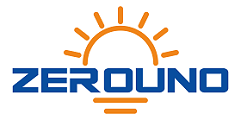The U.S. Department of Energy (DOE) has released its latest report in a series analyzing markets where LEDs compete with traditional lighting sources. The new report, Adoption of Light-Emitting Diodes in Common Lighting Applications, reveals a wealth of insights into promising pathways for SSL technology development, providing estimates of the energy saved in 2014 due to current levels of LED penetration in 10 lighting applications, as well as the potential energy savings if each of these applications had switched completely to the best available LED products. Most notably, it puts the spotlight on two commercial and industrial applications – linear and low-bay/high-bay – that hold by far the greatest potential for future energy savings from SSL.
Annual source energy savings from LEDs in 2014 were approximately 143 tBtu (equivalent to a cost savings of about $1.4 billion), but would have approached 4,896 tBtu (saving $49 billion) if all applications had switched “overnight” to the best-available LEDs. Among other key findings:
-
While LED installations increased in all applications between 2012 and 2014, more than quadrupling to 215 million units overall, market penetration remains modest, climbing to 3% overall, versus less than 1% in 2012.
-
Small directional LEDs remain the market-share leader, with market share increasing from 10% in 2012 to 22% in 2014. Growth is expected to slow in coming years.
-
LEDs enjoyed a 10% share of outdoor applications in 2014, versus just 2.8% of indoor applications, which represent a significantly larger market in terms of units.
-
LED cumulative installations were predominantly in indoor (88%) versus outdoor (8%) and other (4%) applications, with total installations led by A-type lamps (36% of units installed) and directional lamps and luminaires (31% of units installed).
-
Thanks to recent performance gains, LED products have begun to compete successfully against lower-priced incumbents in important commercial and industrial applications, attaining a 1.3% share in linear fixtures and a 2.2% share in low-bay/high-bay applications – the two applications with the greatest potential for future energy savings from SSL.

